Trump Is Praising The Stock Market Again (Facepalm!)
Now that the stock market is in an uptrend again, President Trump is back to praising the market’s performance:
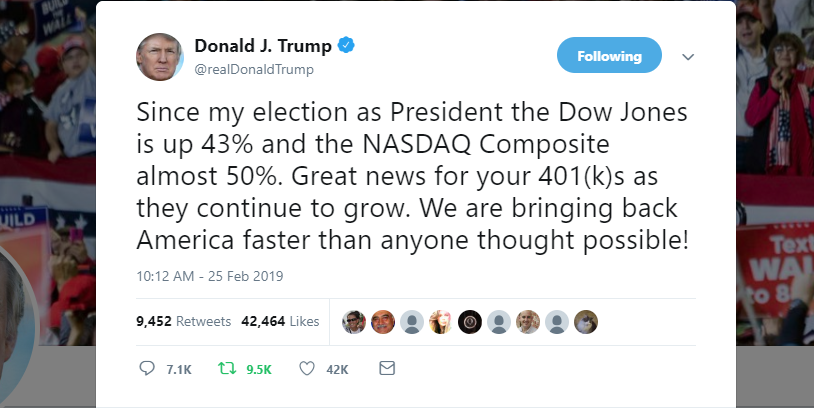
President Trump’s stock market cheering has always irked me due to the fact that he was calling it a “big, fat, ugly bubble” back in 2016 before he won the election and is now acting as if it is a sustainable trend. The reality is that the stock market boom is really driven by debt and central bank intervention, and is now very overpriced, which is the very definition of a bubble. I believe that this bubble is going to burst and burn investors who thought it would go on forever. As I’ve said before, Trump’s market cheering is extremely irresponsible because it is similar to if President Bush was cheering soaring housing prices (and the temporary wealth increase) in the mid-2000s before the 2008 crash.
Numerous valuation measures show that the U.S. stock market is overpriced. According to the cyclically-adjusted price-to-earnings ratio or CAPE (a smoothed price-to-earnings ratio), the U.S. stock market is nearly as overvalued as it was in 1929 before the disastrous stock market crash:
(Click on image to enlarge)
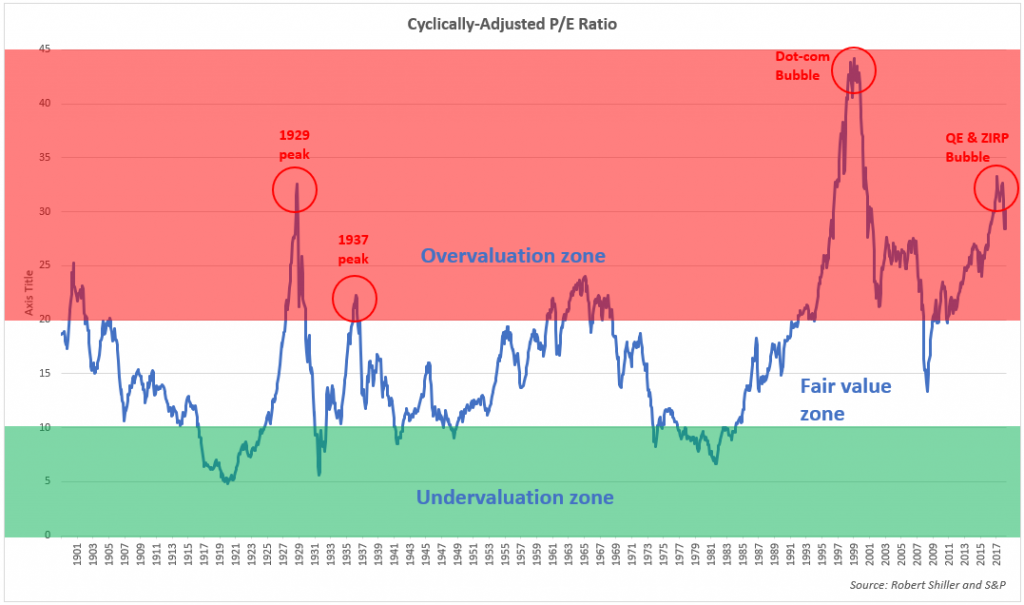
Tobin’s Q ratio (the total U.S. stock market value divided by the total replacement cost of assets) is another stock market valuation indicator that confirms that the market is overvalued like it was at prior generational peaks:
(Click on image to enlarge)
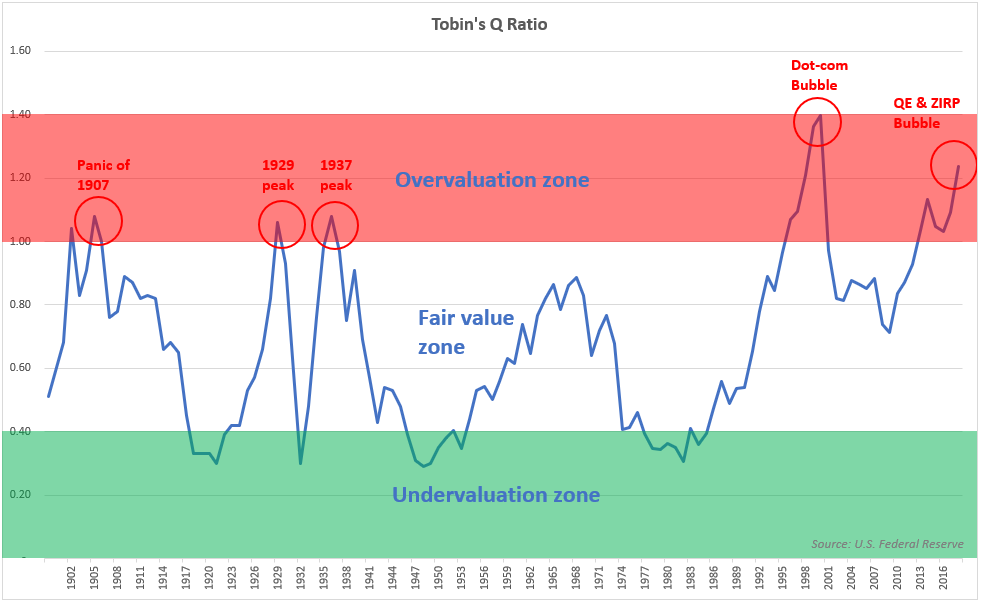
Since the early-1980s, a credit bubble has been forming in the United States. The chart below shows public and private debt as a percent of GDP (see the blue line on the chart). Since the early-1980s, debt as a percent of GDP surged from 150% to 350%. It’s no coincidence that the stock market boom (see orange line) followed a similar trajectory as the debt boom because debt binges supercharge economic growth (at least for a time).
(Click on image to enlarge)
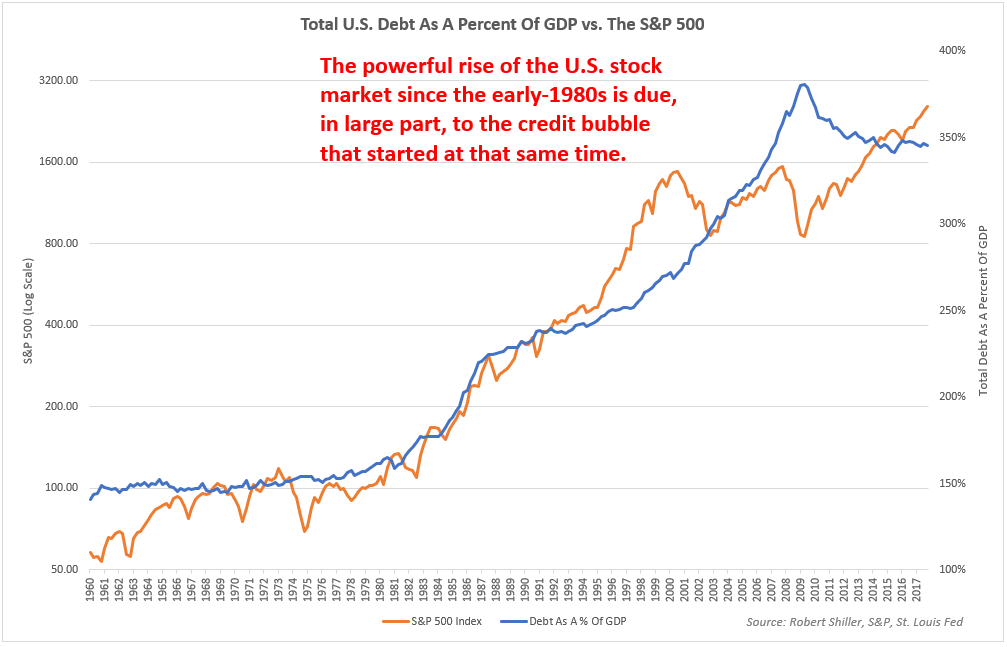
The U.S. is not the only country that has been experiencing a debt bubble – it’s a truly global phenomenon. Global debt has surged by nearly $150 trillion since 2003 and $70 trillion since 2008. As bad as the 2008 global financial crisis was, the next crisis will hit the global economy even harder simply due to the fact that an additional $70+ trillion in debt has been added. That means that governments and central banks have far less firepower with which to stabilize their economies in the next crisis.
(Click on image to enlarge)
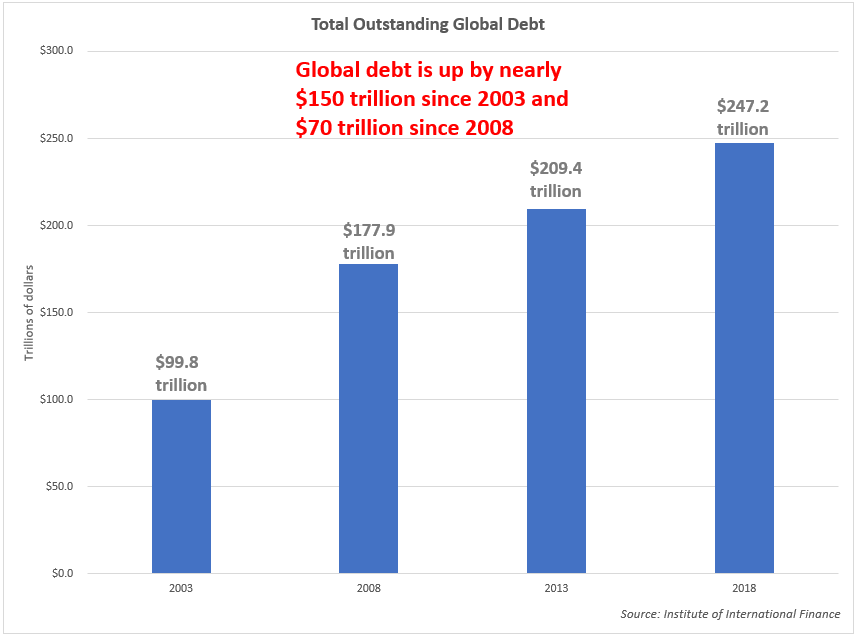
The debt binge of the past several decades caused global debt as a percentage of GDP to reach an all-time high of 225% in recent years (see black line):
(Click on image to enlarge)
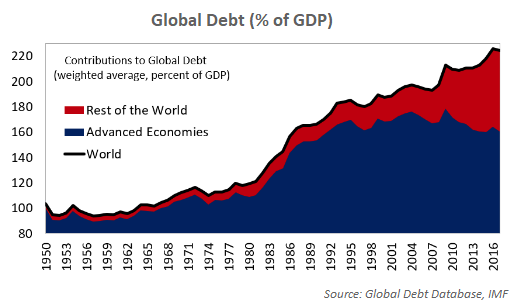
To summarize, it frustrates and scares me to see President Donald Trump praising the stock market boom knowing that it’s built on such a precarious foundation. He is encouraging investors to take tremendous risks by buying into the market at these nosebleed valuations. Instead, he should be urging caution and helping to develop a plan to defuse the massive U.S. stock market bubble.
For the author's full disclosure policy, click here.



